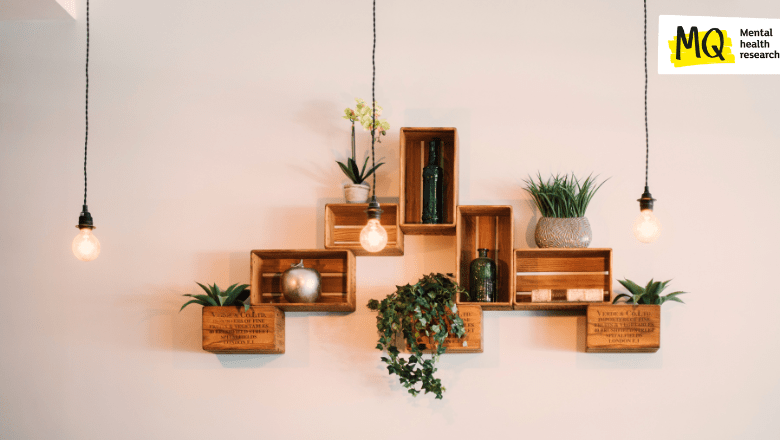10 Ways Design Can Reduce Stress

Our surroundings have a huge impact on our stress levels. Our bodies pick up on sensory inputs and stimulus without us even being consciously aware. So it’s important therefore to consciously take time to choose the spaces we live in and work in. Here’s are some ways your interior design can help you shape your stress levels:
- Nature – Incorporating natural elements like plants, natural light, and views of nature can reduce stress levels and improve mental well-being. Studies have shown that biophilic design (incorporating nature into your surroundings) has been shown to have a positive impact on mood, creativity, and productivity that exposure to nature can improve mood, cognitive function, and stress levels. Read more about why plants can help us destress.
- Comfort – The body’s ability to stay warm or to feel warm – or thermal comfort – can massively impact stress levels and therefore productivity. Equally, during extremely hot weathers being able to provide a cool enough environment can have an impact too. Comfortable surrounding naturally reduce stress levels, therefore providing comfortable furniture, adjustable lighting, and temperature control can make the workspace more comfortable for us humans. So while external temperature is likely to impact stress levels, interestingly stress may also impact body temperature and some believe stress might even cause fevers including hyperthermia and hypothermia.
- Noise – Noise can be a significant stressor in many environments including the workplace, depending upon the environment and the type of noise. In fact, noise pollution can have an impact on both mental and physical health. Employers can reduce noise levels by providing quiet areas for concentration or offering noise-cancelling headphones. Indeed listening to music can reduce stress by having a significant effect on heart rates, so listening to music while working may well help employees work with less stress and increased productivity. Although it’s important to note different types of music have different effects on different people, so perhaps those noise cancelling headphones could be used to choose your own soundtrack at work.
- Privacy – Personal space helps give people a sense of self and a sense of safety. Providing private spaces for meetings, phone calls, or breaks can give employees a space to decompress and reduce stress levels.
- Movement – Encouraging movement throughout the day can reduce stress levels and improve physical well-being. Providing standing desks, exercise equipment, or encouraging walking meetings can help employees stay active. Even encouraging team sports for colleagues can help promote well-being and reduce stress.
- Light – Proper lighting can have a significant impact on mood and energy levels. Adequate lighting can improve productivity and reduce eye strain, while dim lighting can create a more relaxed atmosphere. Natural lighting is also known to promote a sense of well-being and reduce stress levels.
- Colour – The colours used in a space can impact mood and emotional responses. Bright, vibrant colours can promote energy and positivity, while muted tones can create a calming and relaxing environment. Careful selection of colours can help manage stress levels in a space.
- Layout – The layout of a space can impact how we feel. An open and flexible layout can encourage movement and interaction, while a more structured layout can promote focus and concentration.
- Noticing – notice what works for you. Look around you right now as you read this article. What elements of the space you’re in help you feel safe, secure, comforted, productive? What elements make you feel less productive, less safe, less secure or less comforted? Focus on colours, textures, people, nature, sounds, sensations, aromas. Taking note of these will help you understand yourself and how you work best and it can help spark conversations with your colleagues too.
Interior design can play a significant role in managing stress levels in various settings, including homes, workplaces, and public spaces. Designing an office space or a working from home space that prioritises well-being and reduces stress can have a significant impact on productivity, engagement, and retention. So it’s worth the effort for many valid reasons.
Read about workplace stress here and how employers can help here.
Source link
#Ways #Design #Reduce #Stress

